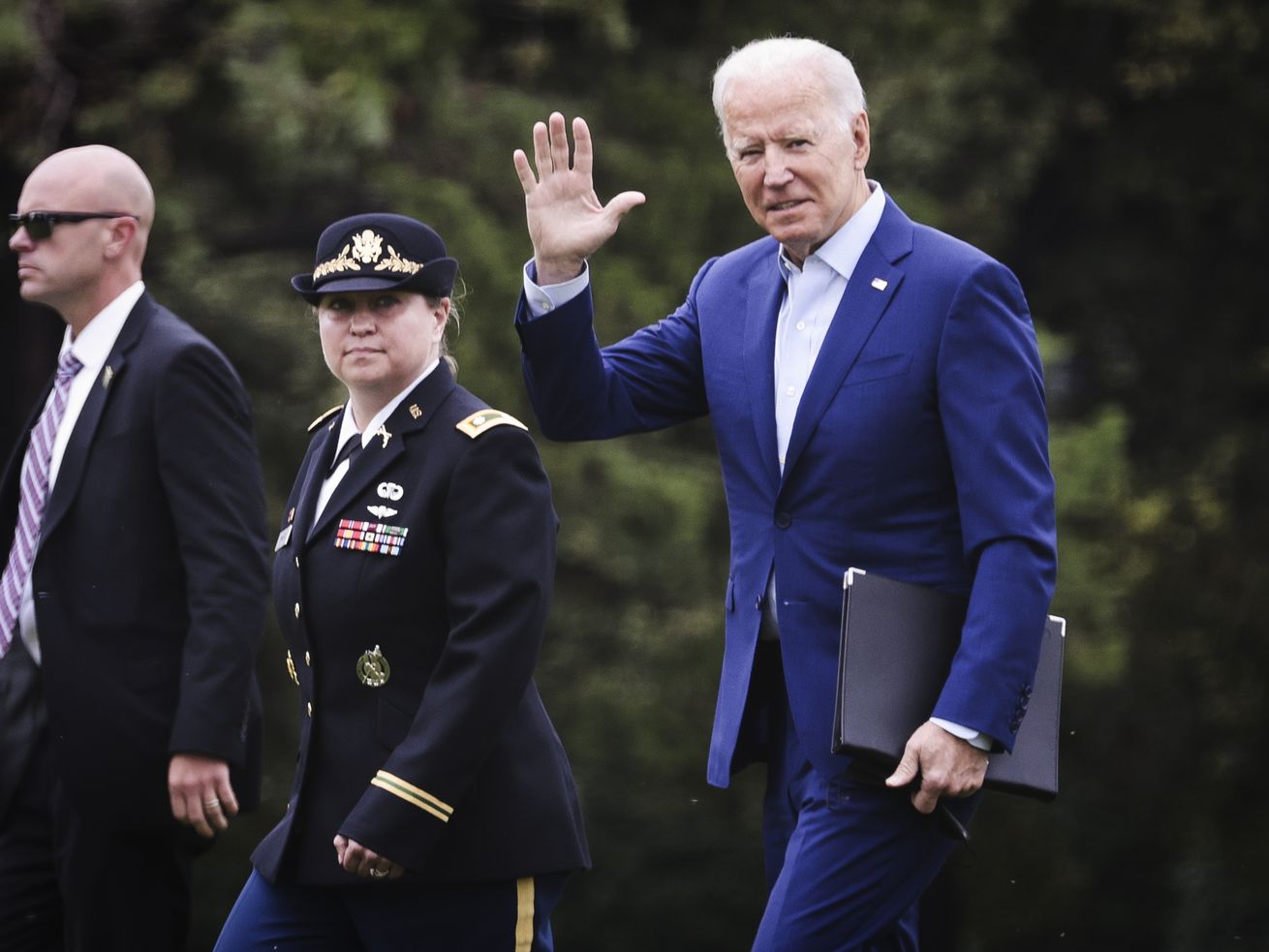Even in 2009, he didn’t believe the military had a strategy for victory.
To understand President Joe Biden’s decision to withdraw troops from Afghanistan against the advice of the US military establishment, you need to go back to a debate that played out more than a decade ago, during the early years of Barack Obama’s presidency.
In 2009, the new Obama administration debated whether to “surge” troop levels in Afghanistan after nearly eight years of war had failed to quell the insurgency from the overthrown Taliban forces. Top generals asked early that year for 17,000 more US troops and then, having gotten those, asked for an additional 40,000 to try to weaken the Taliban and strengthen the Afghan government.
Then-Vice President Biden was consistently one of the biggest skeptics of the military’s recommendations. Throughout months of debate, he repeatedly raised the inconvenient point that the generals’ preferred strategy seemed extremely unlikely to lead to actual victory. “We have not thought through our strategic goals!” he shouted during the Obama administration’s first meeting on the war in Afghanistan.
/cdn.vox-cdn.com/uploads/chorus_asset/file/22788609/GettyImages_566466263_copy.jpg) Universal History Archive/Universal Images Group via Getty Images
Universal History Archive/Universal Images Group via Getty ImagesAll this was documented at the time in Bob Woodward’s deeply reported 2010 book Obama’s Wars. Biden did not actually support withdrawal at the time — he pushed for a more limited mission focused on counterterrorism, accompanied by a smaller troop surge than the military wanted.
But his dark view of the long-term picture was clearly vindicated in the decade since. Now that Biden is president and has actually withdrawn from the war — leading to a Taliban takeover of Afghanistan — it’s worth revisiting that past debate, as outlined in Woodward’s book, to understand why his mind was so firmly made up.
What Biden argued in 2009
The US initially invaded Afghanistan in 2001 because its Taliban regime had sheltered Osama bin Laden’s terrorist group al-Qaeda; the military deposed the Taliban and sent bin Laden fleeing from the country by the end of that year.
After that, Americans became distracted by a separate war of choice in Iraq, while a Taliban insurgency brewed in Afghanistan and terrorist groups relocated to Pakistan and other countries.
So a grueling, months-long debate unfolded during Obama’s first year in office over what, exactly, the US’s goals should then be in Afghanistan, and whether many more troops were needed to accomplish them. Woodward chronicles this debate in Obama’s Wars in exhaustive detail. Military leaders wanted tens of thousands more troops to implement an expansive counterinsurgency mission in an effort to stabilize the country, as had just been done in Iraq.
Biden didn’t buy it. At every step, he tried to argue for less — for a more limited mission than the military was asking for. During meetings, this often made him the skunk at the garden party as he made a few noteworthy arguments:
Building a functioning nation-state in Afghanistan was impossible. Woodward writes that during one October meeting, Biden asked the generals, “If the government’s a criminal syndicate a year from now, how will troops make a difference?” He followed up with, “If a year from now there is no demonstrable progress in governance, what do we do?” He didn’t receive a convincing answer to either question.
Later on, he wrote memos to Obama arguing for “no full counterinsurgency” and “no nation-building.” He thought the military’s goals of strengthening Afghanistan’s military and police force were doomed. And he said the following at a meeting with National Security Council leaders, per Woodward:
Historically, [Biden] said, it’s been very difficult—impossible—for foreign interventions to prevail in Afghanistan. With tens of thousands of troops on the ground already, if we can’t do it with this number and we don’t have a reliable partner in the Afghanistan government, then it seems irresponsible to inject additional troops on top of that. We’re just prolonging failure at that point, he said.
The Afghan Taliban posed little threat to the US homeland. Biden wrote a six-page memo to Obama in which he questioned intelligence reports portraying the Taliban as a new al-Qaeda recruiting foreign fighters that posed a transnational terrorist threat. “Biden indicated that, based on the way he read the intelligence reports, the phenomenon was grossly exaggerated,” Woodward writes. “The vice president did not see evidence that the Pashtun Taliban projected a global jihadist ideology, let alone designs on the American homeland.”
At a meeting discussing the US strategy in Afghanistan, Biden asked, “Is there any evidence the Afghan Taliban advocates attacks outside of Afghanistan and on the U.S., or if it took over more of Afghanistan it would have more of an outward focus?” An intelligence official responded that there was no evidence.
The fall of Afghanistan’s government wouldn’t be so bad. Woodward describes a phone conversation between the president and vice president near the end of the review, during which Biden said, “it would not be that bad if the Karzai government fell.” The book does not elaborate on what exactly Biden meant by this, but Obama disagreed, arguing that “the downside was too great.”
But Biden didn’t argue for full withdrawal back then
Biden diagnosed the problems well, and he was likely the high-level official most skeptical of the Afghanistan war in the Obama administration. But though his logic arguably pointed toward a withdrawal of troops in the near future, he didn’t argue for that — it simply seemed too unpalatable. Officials were not ready to stomach the Taliban retaking the country.
Instead, Biden proposed a smaller surge of 20,000 troops rather than 40,000, with a mission of “counterterrorism” as opposed to counterinsurgency. (Think targeting terrorists rather than nation-building.) The military fired back that that would be insufficient. Obama ended up agreeing to send 30,000 troops and satisfy most of the military’s demands, in part because he did not want to “break with” then-Defense Secretary Robert Gates, Woodward writes.
/cdn.vox-cdn.com/uploads/chorus_asset/file/22788621/GettyImages_1180052179_copy.jpg) Shah Marai/AFP via Getty Images
Shah Marai/AFP via Getty ImagesAfter a few years with the heavily expanded troop presence that, as Biden predicted, did not result in Afghanistan becoming a functioning government or in security forces capable of defeating the Taliban, Obama began a troop drawdown in his second term. Since then, US policy has essentially been to kick the can down the road.
In 2015, then-Vox staffer Max Fisher wrote, “The war is already lost, and has been for years,” adding that the only remaining mission was “to temporarily stave off Afghanistan’s inevitable collapse, a few months at a time.”
Former President Donald Trump continued that can-kicking until 2020, when he reached a deal with the Taliban to end the war. It then fell on Biden to decide whether to stick with that arrangement. He did so — rejecting advice from his generals — and a Taliban takeover has now occurred. But his decision was no doubt grounded in the fact that he’s had these debates before.
Author: Andrew Prokop
Read More



